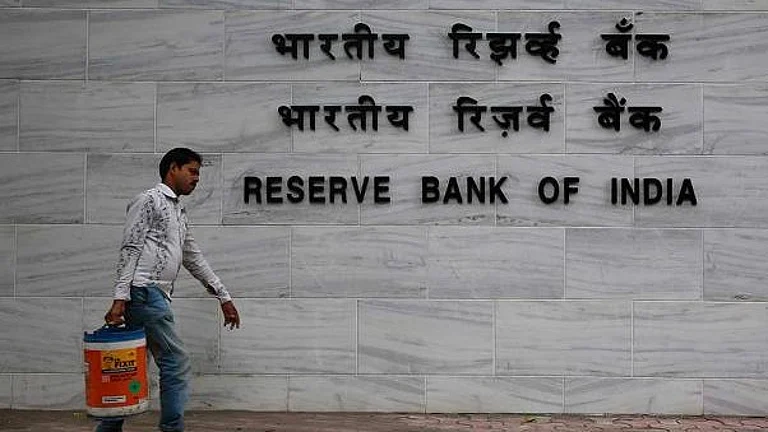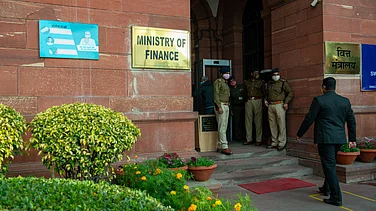Global monetary easing has finally begun. September saw the much-awaited move by the US Federal Reserve as it cut its policy rate by a larger-than-expected 50 basis points (bps), setting the ball rolling on synchronised policy rate easing cycle in advanced economies.
That also paves the way for rate cuts by other central banks, especially in emerging markets.
It is not all black and white, though. Central banks of emerging markets, including India, are grappling with two contrasting sets of risks that bring caution to monetary policy actions.
Navigating Uncertainty
First, the last mile of disinflation towards the target remains sticky with elevated food prices, which may require monetary policy to remain tight.
Second, there are concerns over growth either due to weakness in advanced economies or other domestic factors, which may demand a rate cut to support growth.
Add to these looming geopolitical uncertainties, economic weakness in China, climate change perils and election outcome in the US, which complicate the outlook on commodity prices, capital flows and trade, and the choice is far from easy.
It is in this milieu that the Reserve Bank of India’s (RBI) Monetary Policy Committee (MPC) on October 9 kept policy rates on hold.
But while the repo rate remains unchanged since February 2023, at 6.5%, the policy stance has changed to “neutral” from “withdrawal of accommodation”.
A neutral stance is less restrictive as it does not necessarily signal tighter monetary conditions. It brings more nimbleness to monetary policy, allowing the central bank to move on either side, aligning with the evolving macroeconomic situation. The neutral stance gives the RBI “greater flexibility and optionality” in the face of uncertainty. If the desired disinflation path is achieved, it raises the likelihood of rate cuts in months to come.
For now, a positive outlook on food inflation owing to healthy monsoons and encouraging numbers on kharif sowing has influenced the neutral policy stance. Beyond that, visibility on a durable decline in inflation will be a key trigger for the first rate cut.
The monsoon ending with 8% surplus rains, healthy kharif sowing (101% of the full season normal area) and harvest entering the market in October should ease food prices sequentially after a brief base-effect-led spike. An improved outlook for the rabi crop (owing to adequate reservoir levels and good soil moisture content) should support the easing in food inflation through the next few quarters.
Paving the Way for Rate Cuts
Meanwhile, non-food inflation remains low. This should bring down the headline inflation this fiscal, compared with fiscal 2024, creating elbow room for monetary policy to ease. Crisil expects inflation based on the Consumer Price Index to soften to 4.5% on average this fiscal, from 5.4% the previous fiscal. Lower inflation is premised on declining food inflation, which stood at 7.5% in the previous fiscal and rose marginally to 7.6% between April and August this fiscal.
We expect gross domestic product (GDP) growth to moderate to 6.8% this fiscal, compared with 8.2% the previous fiscal. The RBI’s forecast for GDP growth this fiscal is slightly higher at 7.2%. While healthy agricultural production is expected to support rural demand, the lagged impact of previous rate hikes is playing out in some urban segments.
Credit growth slowed to 13% in September from 15% at the start of the fiscal, responding to higher interest rates and tighter lending norms.
A lower fiscal impulse (due to moderating government spending to meet fiscal deficit targets) is also expected to weigh on growth.
Softening inflation will be the key trigger, but moderating growth should also provide some scope to cut rates to support growth.
An easier monetary policy should, with a lag, support growth as rate cuts percolate over 2-3 quarters, lowering bank lending rates. Meanwhile, bond yields have already slipped, reacting to lower oil prices and government borrowings, surplus liquidity in the system, expectations of softer inflation in the coming quarters and easier domestic and global monetary conditions. Between March 2023 and now, while the repo rate has remained unchanged, the 10-year benchmark government security yield has fallen 60 bps.
The MPC, however, remains cautious given prevailing uncertainties. It is in no hurry to start the easing cycle. The upside risks to inflation need monitoring and more clarity on them should guide further action. Domestically, the biggest unknowns are weather disruptions—which have risen in intensity and frequency and remain unpredictable.
We expect a 25-bps reduction in the repo rate during the MPC’s policy review meeting in December, followed by another 25-bps cut this fiscal. Additionally, we expect this rate cycle to be relatively shallow with greater reliance on liquidity management to ensure policy transmission.
The author is principal economist at Crisil Limited. Views expressed are personal.


























